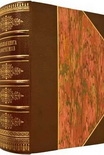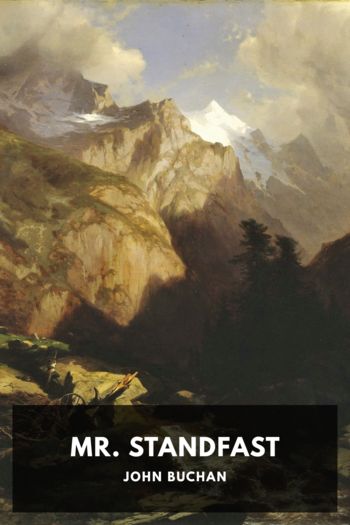Coconut Chaos, Diana Souhami [leveled readers TXT] 📗

- Author: Diana Souhami
Book online «Coconut Chaos, Diana Souhami [leveled readers TXT] 📗». Author Diana Souhami
28
August. The Pandora wrecked on the Great Barrier Reef. Four of the Bounty prisoners die.
The lives of the Pitcairn fugitives were gone with faint trace. Those who recorded their fate used the bleached tone of the chronicler: ‘Arrived in 1790. Died in … Shot in the back as he tended his yams’ … ‘Murdered in the mountains …’ But the focus of those restless seafaring men would not have been to settle as peasant farmers. The island was not a place for those who’d known wider shores.
It was my hunch that Christian and some of the murderers had left the island. Fear of reprisal would have diminished with time. There was enough expertise among them to build an equivalent ship to James Morrison’s schooner. It took him less than a year. The women could make sails, the Polynesian men knew the qualities of wood and how to hew it, the English had the ship’s forge. Those who got away would have sworn to silence the women they left behind.
I observed the ocean and listened to its rhythmic chords. Two spouting whales played. They rolled to the surface then dived. Perhaps the men left in good weather in small boats like the one Bea was making with such ease, or as itinerant crew on a passing whaler. Americans hunted whales in these waters. The Pitcairn Register recorded the arrival of an unnamed ship on 27 December 1795. Adams spoke to Captain Folger of three ships that had called and how one sent a boat to the shore. It was feasible to work a passage back to England from China or America.
There were rumours that Christian made frequent visits to an aunt in Cumberland in the 1800s. And in 1808 Peter Heywood was sure he saw him in Fore Street near the docks in Plymouth. He walked fast to catch up with him. The man turned. Heywood was emphatic it was Christian. The man then ran because he’d been recognised. Heywood chased him but didn’t catch him. He wondered whether to make more enquiries but feared all the trouble and pain this might lead to, so did nothing. He recounted this to the explorer Sir John Barrow, who wrote a history of the mutiny in 1831.
Children born on Pitcairn in the 1790s would not have been spared the sight of the murder of their fathers and the abuse of their mothers. Nor could they have been certain of their parentage. Four men were left on the island by 1793. The eleven women were expected to serve them in every way.
A year after the alleged massacre the Register recorded ‘a great desire in many of the women to leave the island’. They built themselves a boat to escape. Perhaps they’d learned how to do this from the men. Teehuteatuaonoa even tore down her house for its planks and nails. This boat was launched on 15 August 1794 and, Young said, ‘according to our expectations she upset’. He called them ‘a few ignorant women drifting upon the waves’.
Prisoners of the island and trapped in a rapacious place, the women grouped together to avoid the men. They lived separately from them and conspired to murder them as they slept. The hatred was mutual. The men, now far outnumbered by the women, became afraid of them. Quintal said he wouldn’t ‘laugh, joke or give anything to the girls’. In his journal Young wrote
It was agreed among us that the first female who misbehaved should be put to death and this punishment was to be repeated until we could discover the real intentions of the women …
The women formed a party whenever their displeasure was excited and hid themselves in the unfrequented parts of the island carefully providing themselves with firearms. In this manner the men were kept in continual suspense, dreading the result of each disturbance.
Into this lawless environment where violence, sex and incest were allied, babies were born. All the children had British names: Sarah McCoy, Jane and Arthur Quintal, Dinah and Rachel Adams, Polly, Robert, George, William, Edward, Dolly and James Young.
In April 1798 McCoy, who’d once worked in a Scottish distillery, turned the Bounty’s copper kettle into a still and made a fiendish liquor from the Te-root (Cordyline terminalis). From that date he and Quintal were alcoholic. When Teatuahitea, or Sarah as she was called, caught too few fish, Quintal bit off her ear. McCoy became entirely disreputable and had frequent alcohol-induced fits. The Pitcairn Register recorded that in one of these he ‘fastened a stone to his neck threw himself from the rocks into the sea and was drowned’. More likely he was despatched, for he was found by a child, in a rock pool, with his hands and feet bound.
The women and their children built houses and fences, cultivated crops, made canoes for fishing, trapped pigs and birds, cooked, sewed and survived. They spoke a patois and they mapped and named their island: McCoy’s Drop, Where Freddie Fall, Break Im Hip, Nellie Fall, Dan Fall, Down the Hole, Headache and, more cheerfully, Bang Iron Valley, Up the Beans, Lucky Valley and Johncatch’acow.
In 1799 Quintal’s partner, the unfortunate one-eared Teatuahitea, fell over a cliff while collecting birds’ eggs. She left four children, all perhaps fathered by him. Despite there being nine women and only three men, Adams maintained Quintal then forcibly tried to take Teraura, who was living with Young, and Teehuteatuaonoa, who’d been claimed by Adams. Adams and Young retaliated by killing him:
One day when he was in John Adams’ house Quintal was set upon and overpowered by the two other men. By means of a hatchet the dreadful work of death was soon completed. The daughter of John Mills (who lived to the age of 93) then a young girl of eight or nine years of age was an eyewitness of the awful deed and used to relate how terrified were all of the little band of women and children who beheld the blood-bespattered walls.
Fifteen young men





Comments (0)